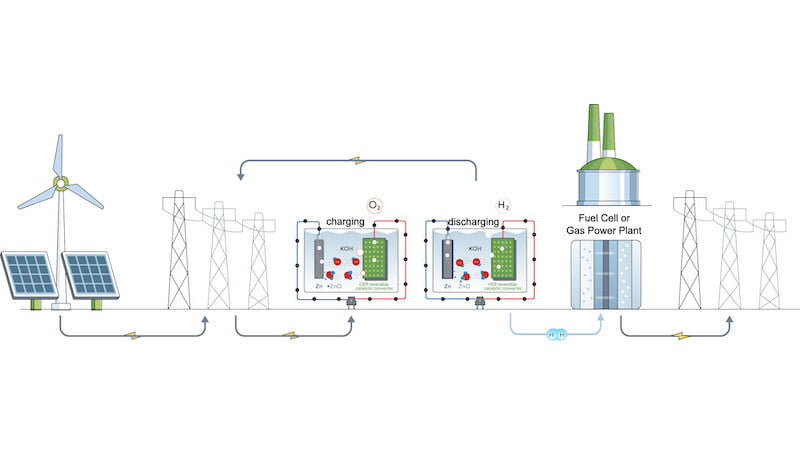
Researchers at the Fraunhofer Institute for Reliability and Microintegration (IZM) have developed an electricity storage device that also produces hydrogen. The system should also be relatively inexpensive.
Solar, wind and hydroelectric power plants alone will probably not suffice for the energy transition. Because in times when regenerative energies are not available, efficient and quickly available storage solutions are required. Research institutes have therefore been working on the development of battery storage for some time.
A team from the Fraunhofer Institute for Reliability and Microintegration (IZM) has now presented another solution. This is based on the use of zinc. Hydrogen is produced as a useful by-product, which is then available for other purposes.
This electricity storage produces hydrogen as a by-product
The researchers combined the zinc-air battery with an electrolysis system. When charging, the hydrogen separates from the oxygen. Regular zinc is formed from zinc oxide. When the cell discharges, zinc and oxygen in turn combine to form zinc oxide. The water reduces due to the lack of oxygen and the system releases hydrogen.
In addition to generating hydrogen, electricity storage has other advantages, because the raw materials required for the battery are relatively widely available. It only requires steel, zinc or potassium hydroxide. The research team says that a zinc-air battery only causes ten percent of the costs compared to a lithium-ion battery.
Battery storage lasts up to ten years
The efficiency values, on the other hand, are still average. When storing electricity, the system achieves an efficiency of 50 percent. In the case of hydrogen production, it is 80 percent. The researchers needed about 44 kilowatt hours of electricity for one kilogram of hydrogen.
A prototype with eight cells is to be built by the end of the year. In the laboratory, the system has already withstood 4,000 charging and discharging cycles without any problems. At the same time, the memory has a long service life. According to reports, a renewal is only necessary after about ten years.
Also interesting:
Source: https://www.basicthinking.de/blog/2023/08/03/wasserstoff-strom-speicher/


